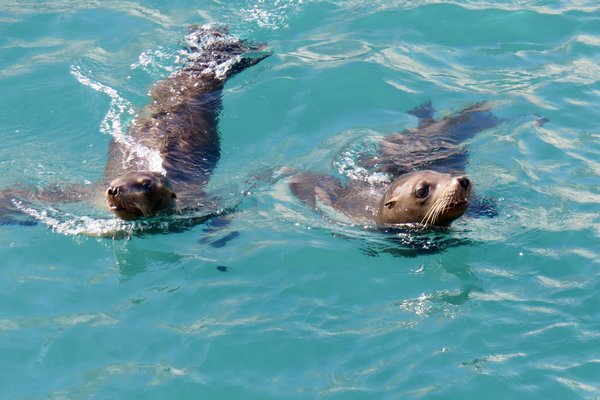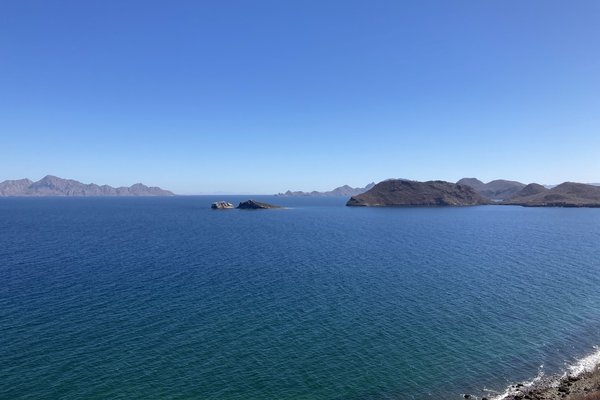Mexico
Gulf of California
The Islands and Protected Areas of the Gulf of California comprise a stunning coastal and marine landscape.
The areas include 244 islands and 9 further protected terrestrial and marine areas, located between Baja California and the Mexican State of Sonora. It is home to a third of the world's marine mammal species, including the endemic and critically endangered Vaquita. There are also impressive numbers of resident and migratory birds on the islands such as Blue-footed Booby and Black Storm Petrel.
Community Perspective: As this is a vast area spanning both sides of the Gulf, you need to make a choice of which component to visit and reserve a boat tour. Clyde has covered Islas Marietas (hub: Puerto Vallarta), Els Bahia de Loreto (hub: Loreto), Kyle Cabo Pulmo, Islands of the Gulf of California, Cabo San Lucas and Balandra (hub: Cabo San Lucas or La Paz), and Kyle again in 2024 for Isla San Jorge.
Site Info
Official Information
- Full Name
- Islands and Protected Areas of the Gulf of California (ID: 1182)
- Country
- Mexico
- Status
-
Inscribed 2005
Site history
History of Gulf of California
- 2019: In Danger
- "due to concerns about the imminent extinction of the vaquita, an endemic porpoise in the Gulf of California ... only about ten specimens of vaquita remain today"
- 2011: Boundary change
- To include Balandra Zone
- 2007: Boundary change
- To include the Islas Marietas National Park and the Archipelago de San Lorenzo National Park
- 2005: Inscribed
- Inscribed
- In Danger
- "due to concerns about the imminent extinction of the vaquita, an endemic porpoise in the Gulf of California ... only about ten specimens of vaquita remain today" Since 2019
- Type
- Natural
- Criteria
- vii
- ix
- x
Links
- UNESCO
- whc.unesco.org
- Official
-
- rbislasanpedromartir.conanp.gob.mx — Isla San Pedro Martir
- cabopulmopark.com — Cabo Pulmo Park
All Links
UNESCO.org
- whc.unesco.org — whc.unesco.org/
Official Website
- rbislasanpedromartir.conanp.gob.mx — Isla San Pedro Martir
- cabopulmopark.com — Cabo Pulmo Park
News Article
- Jan. 5, 2021 france24.com — Mexican fisherman dies after clash with conservationists
- May 14, 2015 biologicaldiversity.org — 'In Danger' Status Sought for Mexico's Gulf of California
- June 4, 2014 huffingtonpost.com — Joint Chinese/Mexican Mega-Development Threatens Cabo Pulmo
- Sept. 18, 2011 kansascity.com — In Mexico's Baja, some fear a 'new Cancun' may harm reef
Community Information
- Community Category
- Wildlife habitat: Fauna
- Natural landscape: Marine and Coastal
Travel Information
Recent Connections
-
IUCN Conservation Outlook Assessment Critical
-
Oceanic Dolphins
Common Bottlenose, Striped, Risso’s, Co…
-
Miocene
The Gulf of California came into existe…
Connections of Gulf of California
- Individual People
-
-
Cousteau
Jacques Cousteau Island -
Hernán Cortés
Gulf of California is called "Sea of Cortez" locally, because Hernan Cortes discovered Baja California in 1536
-
- Geography
-
-
Cape
Cabo San Lucas -
Pacific Ocean
-
Colorado River Basin
Upper Gulf of California - Colorado River Delta (marine portion) -
River deltas
Upper Gulf of California - Colorado River Delta (marine portion) -
Gulf of California
Its southern tip reaches State Highway 003 near Bahia Adair, some 500m from the Gulf of California at most
-
- Trivia
- Ecology
-
-
Oceanic Dolphins
Common Bottlenose, Striped, Risso’s, Common, Rough-toothed dolphins, Short-finned pilot whale, Orca, False killer whale (UNEP WCMC)
-
Turtles and tortoises
Five of the 8 world’s sea turtles species are present in the area. (AB ev) -
Critically endangered fauna species
Vaquita (a marine mammal) - 10 remaining (2023) -
Tidal effects
tidal mixing associated to tides that can reach over 10m high (AB ev) -
Mudflats
"ranging from a variety of pelagic and benthic environments to coral reefs, as well as mudflats, coastal wetlands and various types of desert and deciduous forest." (OUV) -
Bird Migrations
The Americas Flyway -
Coral
Coral reef at Cabo Pulmo National Marine Park -
Crocodiles
River crocodile at Islas Marías Biosphere Reserve -
Pelicans
Brown PelicansSee ebird.org
-
Seals
elephant seal -
Sharks
"There are approximately 40 shark species in the Gulf of California out of which 12 are labeled as threatened" -
Whales
11 species of whales (AB ev) -
High-Biodiversity Wilderness Area
North American Deserts, Southwest United States and Mexico (Sonora desert) -
Mangroves
Carmen Island has a large mangrove forest of red, black and white mangroves (AB ev) -
Fish
Crit X: Almost 900 species of fish have been documented with some 90 species occurring exclusively in the Gulf of California or parts of it. These include the critically endangered species Black Sea Bass and Totoaba, as well as the vulnerable Basking Shark. -
Multiple biogeographic realms
Colorado River Delta (marine portion): Nearctic realm. Islas Marietas: Neotropical realm. "This cluster of islands is situated in a transitional zone between the Nearctic and Neotropical biogeographic regions"See lacgeo.com
-
- Damaged
-
-
Blown up
Islas Marietas: Playa Escondida (Hidden Beach): "It is rumored that the hole that created the Hidden Beach was a result of deliberate bombings. The Marieta Islands have always been completely uninhabited, making them ideal sites for military testing by the Mexican government."
-
- World Heritage Process
-
-
Perfect Inscriptions
2005 -
Minor modifications after inscription
2007 (Islas Marietas National Park and the Archipelago de San Lorenzo National Park), 2011 (Balandra Zone) -
Natural sites filling gaps cited by IUCN
Gulf of California ecoregion
-
- Human Activity
-
-
Language isolate
Isla Tiburon (Shark Island) is a part of the nomination and is owned by the Seri. Seri is a part of the proposed Hokan language family.
-
- Constructions
-
-
Prison
Gulf of California Maria Grande Isle has had a penal colony since 1905
-
- WHS on Other Lists
-
-
IUCN Green List
Reserva de La Biosfera Isla San Pedro Mártir (2019), Bahía de Loreto National Park -
Centres of Plant Diversity
NA38 Sonoran Desert, including Baja California - "The diversity of terrestrial and marine life in the property is extraordinary and constitutes a global priority for biodiversity conservation. On land, the close to 700 species of vascular plants are notable within a desert environment." -
World Biosphere Reserves
Islas del Golfo de California, 1995; Islas Marietas, 2008 -
WWF Global 200
Marine, Tropical Upwelling: (214) Gulf of California - MexicoSee web.archive.org
-
IUCN Conservation Outlook Assessment Critical
-
Ramsar Wetlands
Humedales del Delta del Rio Colorando, 1996; Laguna Ojo de Liebre, 2004; Parque Nacional Bahia de Loreto, 2004; Parque Nacional Cabo Pulmo, 2008
-
- Timeline
-
-
Miocene
The Gulf of California came into existence approximately 16.5 to 9.2 million years before present, when tectonic forces rifted the Baja Peninsula from the North American Plate. (EOEarth)
-
News
- france24.com 01/05/2021
- Mexican fisherman dies after clash…
- biologicaldiversity.org 05/14/2015
- 'In Danger' Status Sought for Mexi…
- huffingtonpost.com 06/04/2014
- Joint Chinese/Mexican Mega-Develop…
Recent Visitors
Visitors of Gulf of California
- Alberto Rodriguez Gutierrez
- Alex Baranda
- Artsybrea
- Atila Ege
- beckyjo27
- Bill Maurmann
- Can SARICA
- Carl Le Boeuf
- Carlo Sarion
- Carlos Sotelo
- Cheryl
- Clyde
- czesioszpachelka
- Daniela Hohmann
- Dan Pettigrew
- David Aaronson
- Delphine Delaunay
- DouglasR
- Els Slots
- Eric Lurio
- Gary Arndt
- giloudepuertorico
- H Beswick
- headventure
- jacob76
- Jana and Matt
- Janos
- Jarek Pokrzywnicki
- Javier Coro
- jballard650
- Jeanne OGrady
- Jens
- jess4sythe
- Jonas Kremer
- Jonoprout
- kathryn.park
- KeithBailey
- Kelly Rogers
- Kevin McFarland
- Kim, Soo-youn
- Kurt Lauer
- Kyle Magnuson
- Lara Adler
- Lillybett
- Lucas Del Puppo
- Lucio
- Luis Filipe Gaspar
- Lukasz Palczewski
- Michael Novins
- michaelsballard
- Mihai Dascalu
- MMM
- Nicolas
- Nihal Ege
- Nolan B.
- pressdm
- Rachel Perkins
- Randi Thomsen
- rivr
- Roger Ourset
- Roman Bruehwiler
- sandersx2
- sbshipway
- Slavi
- Stanislaw Warwas
- Sutul
- Svein Elias
- Szucs Tamas
- takanenohana
- Ted Coombs
- Tim Allen
- Timothy C Easton
- Toxicologist
- tquist24
- Traveling Girl
- Tsunami
- Waters88
- Waxwing
- ZCTLife
- Zoë Sheng
Community Reviews
Show full reviews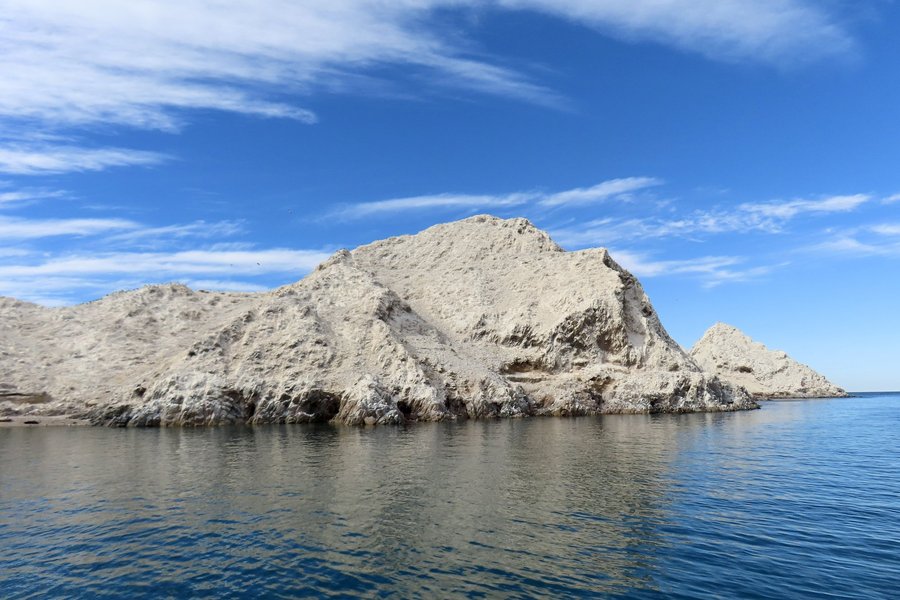
On my 3rd road trip to Sonora, Mexico from Los Angeles I decided to reserve a boat tour to Isla San Jorge, part of the 'Islands and Protected Areas of the Gulf of California' world heritage site. During previous visits I had primarily focused on El Pinacate and Gran Desierto de Altar Biosphere Reserve. Typically each trip was 4 days and we always entered and departed Mexico from the Lukeville Port of Entry in Arizona. On the way to the border, you will drive through Organ Pipe Cactus National Monument, the location being quiet far from population centers, you can expect a relatively quick border crossing. November through March are all excellent times to visit, I would avoid the Summer.
1st Trip: February - March 2014
2nd Trip: December 2016 - January 2017
3rd Trip: November - December 2024
Island of San Jorge (Bird Island)
Some years ago I noticed a tiny isle on the world heritage map for the Gulf of California. I also vaguely remembered an island tour being featured in a tourism brochure during my first visit to Puerto Penasco. Thus began my initial interest in visiting San Jorge Island.
During this recent trip, my main priority was to visit this small island near the Upper Gulf of California. The cost (as of 2024) is $114 per person and its mostly a full day experience. From Puerto Penasco's harbor, you will depart at 8am and return by 4pm (approximate). The boat keeps a leisurely pace …
Keep reading 0 comments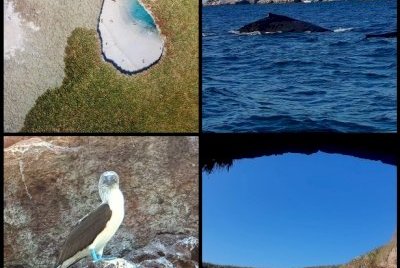
I visited this WHS in January 2022 focusing on the Islas Marietas National Park. Depending on the tide and weather conditions, the boat tour companies with the most expensive prices from Puerto Vallarta, Jalisco (full day trips) and Punta Mita, Nayarit do half day trips including a stop and swim in the instagram famous hidden beach, and two more snorkelling and swimming points along another beach of the Marietas Islands.
Make sure to allow more than one day just in case weather isn't good, and when booking at least a day in advance, stress that you would like to visit the hidden beach at the earliest time in the morning to make sure the daily limit isn't reached. Just outside the rocky outcrop leading to the hidden beach from the sea, national guards patrol the area to make sure only visitors with 2 appropriate bands on their hand are given helmets and lifejackets to swim to the hidden beach. From the time you start swimming to the beach you're allowed around 30 minutes and then you have to swim back to your boat. We booked a private tour and knowing that most tours leave the hidden beach as their second or third stop during the Islas Marietas tour, we specifically asked to head straight there, ignoring the whales and dolphins other boats had spotted far out at sea, in favour of getting to the hidden beach first. Drones are not allowed any longer to protect the birds so …
Keep reading 0 comments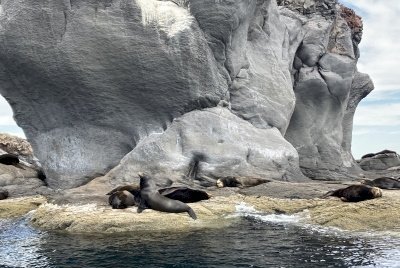
Before I started researching for my 2022 Mexico trip, I hadn’t given the Gulf of California WHS much thought. Maybe it’s the uninspirational name or the fact that no less than 12 reserved areas all over the place are included so it seems to lack focus. In its nomination dossier, it compared itself to the Galapagos, Henderson Island, and Gough Island. While the others are more remote and pristine, after now having visited I must say there’s a whole lot of truth in this. Also, Argentina’s Peninsula Valdes came to my mind as a similar site.
I visited location #5: Bahia de Loreto National Park. From La Paz, where my plane landed, I first drove 3 hours through nothing. It was such a boring drive that I was afraid to fall asleep behind the wheel. Then the landscape suddenly changed: it became a kind of Grand Canyon with cactus forests, the Sierra de la Giganta. Only behind this massive mountain range, the Gulf becomes visible. There’s a great viewpoint along highway 1 (Mirador Chuenque), where you have an overview of several of the islands in the bay. There are 5 larger islands in Bahia de Loreto, and many smaller islets.
For an easy tick of the site, you can walk along Loreto’s malecon or on its beaches. I did so on my first evening in town and especially enjoyed watching the Brown pelicans fishing. They are pretty creatures with their reddish and ochre neck and pouch. When …
Keep reading 0 commentsKyle Magnuson
Cabo Pulmo National Park (Between La Paz & Cabo San Lucas)
Gulf of California (Inscribed)
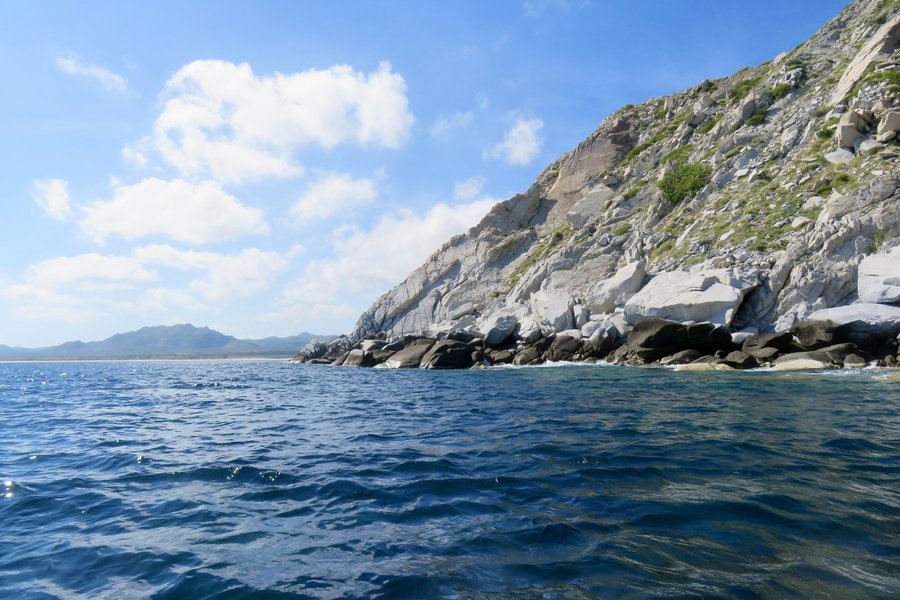
We visited this world heritage site over a period of 8 days. One recommendation (based on your own resources), spend a bit more with established tour companies to get a more full experience of the major components that make this enormous natural WHS unique. We primarily used "Cabo Adventures" and they are professional and offer basics like sunset tours to more serious excursions to places like Cabo Pulmo National Park. It is also possible to rent your own vehicle, but it's not an absolute requirement, since there is a bus system that connects Cabo San Lucas, La Paz, Loretto, and pretty much the whole Baja Peninsula for reasonable prices. I will return to other components of this WHS in the future, it's so expansive and vast that it will be rewarding to return.
Cabo Pulmo National Park (Ramsar)
"The coral reef at Cabo Pulmo is one of the most important in the Gulf of California and in the eastern Pacific." UNESCO Description
In our experience Cabo Pulmo National Park was exceptional and worth the time and effort to get there. In fact, from Cabo San Lucas or La Paz it's about 2.5 hours by chartered van. The last 10 kilometers (approximate) of the journey is on a dirt road that is pretty bumpy and passenger cars are sometimes known to have issues passing this final stretch. The small village of a couple hundred people has no running water or electricity, everything they might have is via generator, solar panels, or …
Keep reading 0 comments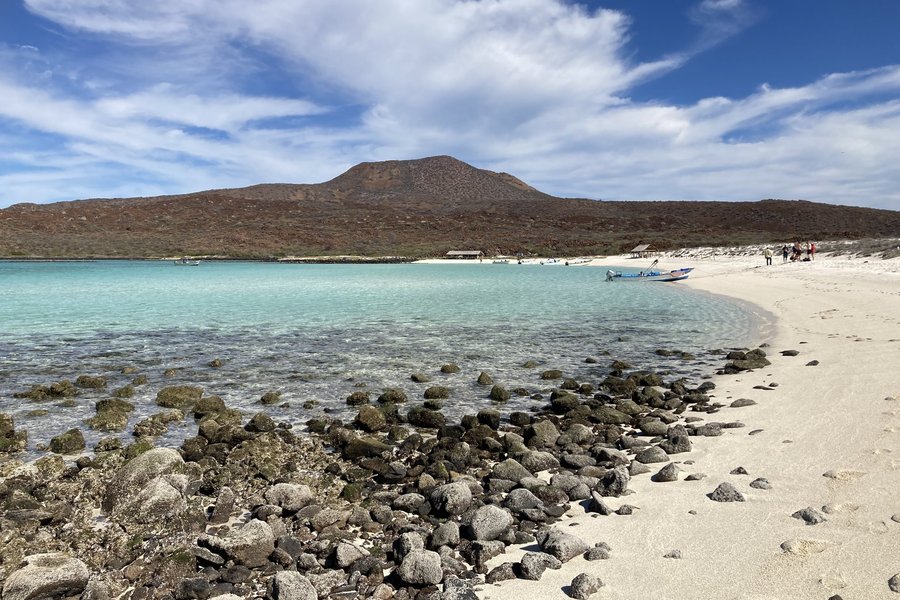
Where I am on the Gulf of California is a perfect example of why this is a UNESCO World Heritage site. In Kino Bay (Bahia de Kino), the desert meets the bay, forming a fascinating juxtaposition of habitats. This area is Eco-oriented, has a full-time Marine Science Center where classes for college students and community members are taught and research data has been being gathered on sea birds, whales and more for years now. The diversity of marine and land life is unique and it is so important to maintain this habitat for current and future generations. The Seri (Comcaac) Nation is just a bit north and this beautiful and talented group of people who have resided here for so long is In the process of passing on their unique language and songs. It is vitally important that this fishing village keeps its focus on the natural world, enhancing the surrounding habitats and providing education about the unique gifts this land offers. The value of this area lies not in being a vacation land and resort for those who wish to escape and play, but, rather, in standing in representation of all that is beautiful, mysterious and pristine on this Earth of ours. Thank you UNESCO. Now, let's the rest of us follow through to make sure this designation is honored.
Keep reading 0 comments
Visit the Gulf of California's crystal-clear waters and you'll thank God you learned to swim. You won't know which way to look as hundreds of fish species swim around you, going about their day in this sunny stretch of water.
Bring your sunscreen -- we were sunburned even through the t-shirts we wore snorkeling -- and watch out for sharks; this is prime habitat for both hammerheads and great whites. You'll be grateful you took the plunge, though, and we recommend camping on one of the islands rather than staying in La Paz or (God forbid) one of those tourist traps like Cabo San Lucas.
Keep reading 0 comments

